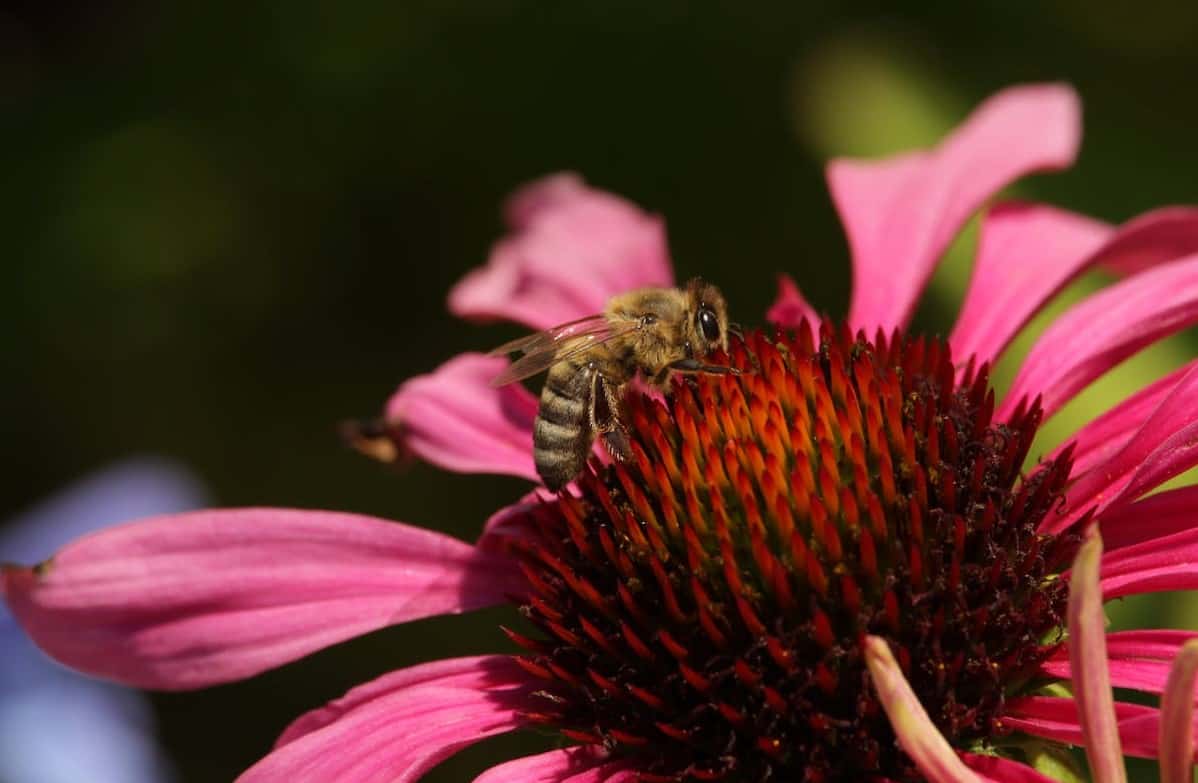By now, we all know that honey bees are industrious insects, playing a vital role in supporting our food supply by pollinating flowers and plants for more crop yields.
We see these bees buzzing around all day to give us raw honey, and we seldom see them resting or sleeping. Do they even get tired and rest or sleep, too?
Let us explore whether a honey bee sleeps or not in this informative blog post.
Do Bees Sleep?
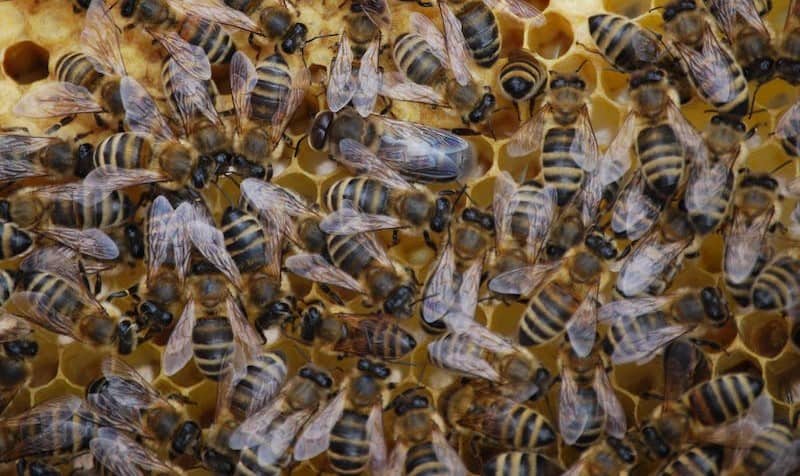
Did you know that bees also need an adequate amount of sleep to survive? Yes, it’s true. Bees have sleep patterns and stages that are necessary for their proper functioning and survival.
It may sound strange and far from the truth as we always see them buzzing around flowers and collecting pollen and nectar. But the truth is that a honey bee needs sleep, just like humans and many other animals.
Sleep has been characterized basically by a reduction of physical and mental activities with an alteration of consciousness. Honey bee foragers were observed to sleep at night and are active during the day.
A study has been conducted on the sleeping behavior of honey bees (Apis Mellifera), indicating that it is an important habit for these six-legged insects. Another study shows that honey bees have varied sleeping patterns and behavior.
Sleeping Patterns of Bees
Like most animals, bees require periods of rest primarily to maintain their physical health. Interestingly, bees have been found to exhibit complex and different sleep patterns.
A variety of factors influence a bee’s sleep pattern and sleep stages.
Roles in the Colony
The sleeping patterns of bees are influenced by their roles in the colony. Worker bees, for example, tend to sleep in shorter bouts throughout the day and night. They often prefer sleeping in a specific location in the hive.
On the other hand, older bees and forager bees tend to sleep much less, averaging around 4-5 hours per day. This difference is thought to be due to the fact that foragers are continually in motion, traveling long distances in search of nectar and pollen.
Time of Day and Temperature
Some honey bees’ sleep patterns change depending on environmental factors. Temperature and time of day significantly impact the behavior of a honey bee when it comes to its sleeping habits.
Bees are ectothermic. They have the ability to regulate their body temperature with the temperature of the environment. As cold-blooded animals, bees tend to sleep more during cooler temperatures or those times of the day when it is much cooler.
Food Sources
The availability of food also plays a role in bee sleeping patterns. The duration and timing of bee sleeping are affected by whether or not there is access to reliable food sources.
When there is an abundance of food, bees tend to sleep less. As they have many energy sources, they are more active. On the other hand, when there is a scarcity of food sources, bees tend to sleep more to conserve their energy and survive.

Where Do Bees Sleep?
Some bees sleep inside the hive, while others prefer taking a nap outside the hive. A bee’s choice of where to sleep varies depending on several factors.
The time of day and season can also play a role in a bee’s choice of sleeping area. We already know that bees prefer to sleep when it’s cooler. So, in hotter weather, honey bees sleep on the edge of the comb or near the hive’s entrance to use airflow to regulate their body temperature.
Of course, the availability of space to sleep on is another factor. Just like humans, bees prefer to sleep in places where they are comfortable and can sleep with minimal to little disturbance.
During the late summer months, when the hive population is at its peak, some bees may have to resort to external sleeping spots due to the lack of space. They may gather together in relaxed postures on plant stems, grass stalks, and even on the ground near the hive.
Worker bees and forager bees tend to sleep on the honeycombs inside the hive. They usually sleep in upright positions on the comb, maintaining a relaxed posture with their heads drooped down and their antennae unmoving. Forager bees usually sleep outside the hive near the entrance, while some worker bees sleep on the outer edges of the comb.
Drone bees usually hang outside the hive and sleep outdoors too. They often cuddle together with other male bees on leaves and branches of trees. Some wild bees may also sleep on the flowers they visit.
Other bee species, such as the bumble bees, do this too!
Solitary bees would sleep on their nests. Some solitary bees and other bee species sleep on leaves and branches. It is also not uncommon to see sleeping bees on a flower head.
It has been noted that some bees sleep on flowers with full pollen baskets to give their wings rest. When these foragers wake up after a light sleep, they go about their business better of bringing nectar and pollen back to the nest.
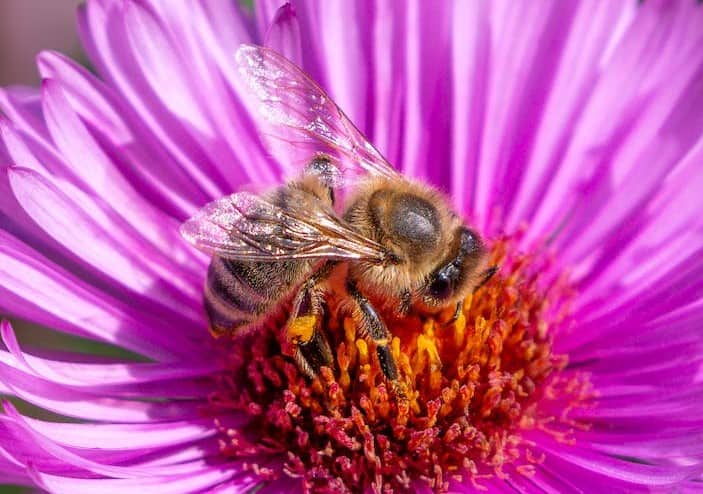
Why Do Bees Need Sleep?
The exact reasons why bees need sleep are still unclear, but it’s thought that sleep plays an important role. Like all living creatures, bees need sleep to function properly.
Restoration and Energy Conservation
During sleeping time, bees are able to conserve energy and restore themselves to the tasks they are to face upon waking up. Bees restore themselves by reducing energy consumption.
During the deep sleep stage, bees are able to decrease their metabolic rate, allowing cells to repair themselves and conserve energy further. This energy conservation is crucial, especially when food sources are scarce, such as in the late summer or during habitat loss.
Deep sleep allows bees to conserve energy for essential tasks. By ensuring proper sleep and restoration, bees can better cope with stressors and maintain the health of the bee colony.
Learning and Memory Consolidation
Bees have impressive navigational skills. They have the ability to remember the locations of flowers they visit, known food sources, and other important information.
Honeybees consolidate navigation memory during deep sleep. Bees sleep to enhance learning and consolidate these pieces of information.
During deep sleep, the brain of a sleeping bee processes and consolidates new information and memories. When bees wake up, they are able to retrieve and recall information, allowing them to find food more easily.
Honey bees deprived of sleep find it hard to convey where there is an abundance of food to other foragers.
Improved Performance
Honey bees that get enough sleep were observed to perform better compared to those bees sleeping for shorter periods.
Lack of sleep among bees can cause disorientation and may hinder the proper performance of their daily tasks. This can result in the overall poor performance of the colony.
A study was conducted on the effect of sleep deprivation among European honey bees on the waggle dance. It found that sleep deprivation negatively affects the signal and directions the sleep-deprived bees want to convey through their waggle dance.
When a honey bee lacks sleep, it is unable to provide better direction to foraging bees.
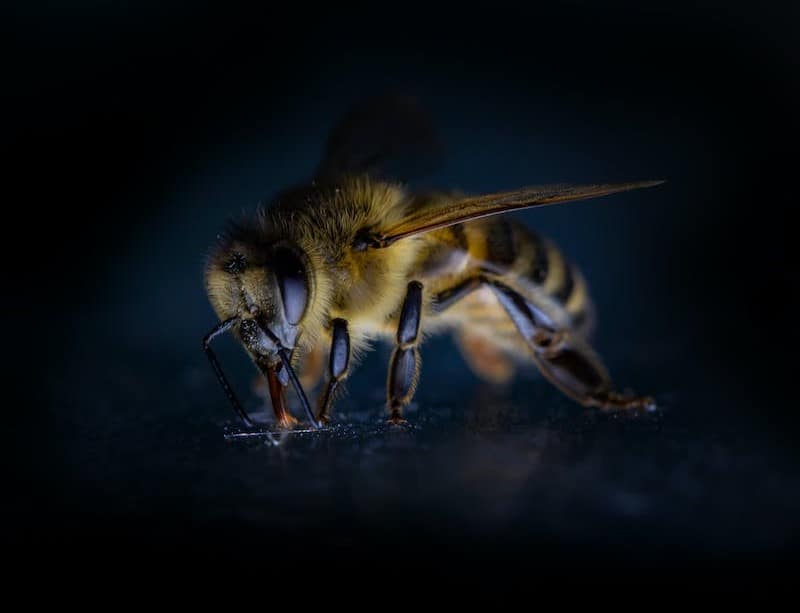
How to Tell if Bees Are Sleeping
It may be difficult to tell when a bee is sleeping. Bees do not have eyelids that close when they fall asleep.
However, certain behaviors would suggest that bees are in a state of rest and asleep.
When bees are sleeping, they are in a more relaxed posture than when they are active. They may rest their heads on the comb or the frame of the hive, and their wings are usually folded back against their bodies.
Bees move less frequently and slower than usual. Occasionally, there may be a slight twitching of the legs or a small flutter of wings. But other than these, sleeping bees do not make much movement at all.
When a bee’s antennae droop, it may also be an indication that it is asleep. The drooping antennae indicate a less alert state of consciousness.
It’s important to note that bees do not sleep for long periods of time, as they must attend to their colony’s needs constantly.
Young bees spend more hours sleeping compared with older bees, but for intermittent periods at a time. Foragers and older worker bees generally sleep once darkness sets in and have more stable sleeping patterns than younger bees.
Still, most bees typically sleep for individual short periods throughout the 24-hour period. Hence, it is difficult to catch bees in various sleep states.
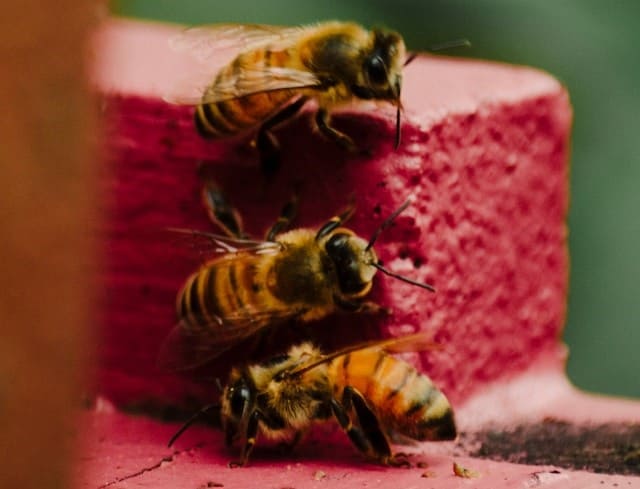
Final Thoughts
The topic of bee sleep is more complex and fascinating than one might initially think. Bees have a unique sleep pattern, characterized by short individual periods of rest throughout the day and night.
The study of bee sleep has implications for bee populations’ overall health and well-being, as sleep-deprived bees may struggle to perform essential tasks such as foraging and pollination.
By recognizing the vital role of sleep among honey bees in maintaining their bodily functions and cognitive processes, we can find ways to help them get better sleep after a day’s work.
Getting disturbances away from your bee colony would help your bees sleep better. Just like humans who get a good sleep at night, all bee species (bumble bees, carpenter bees, mason bees, etc.) feel refreshed upon waking up and have more vigor going about their daily business.
